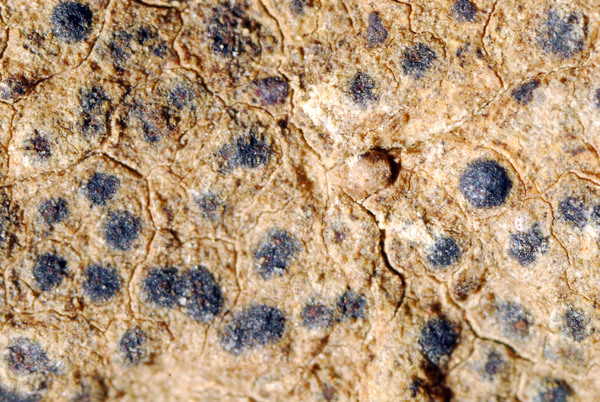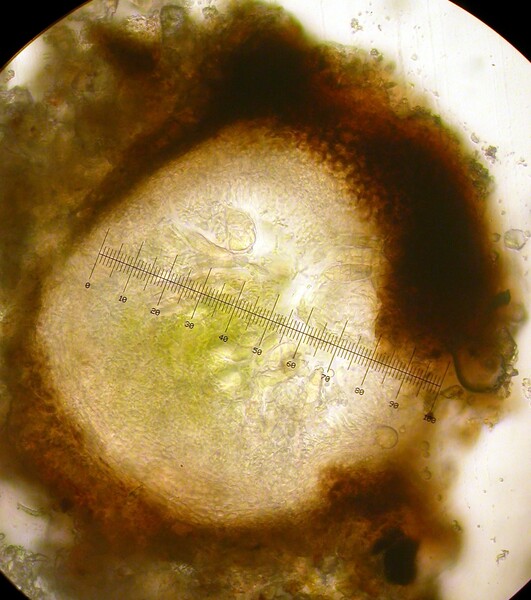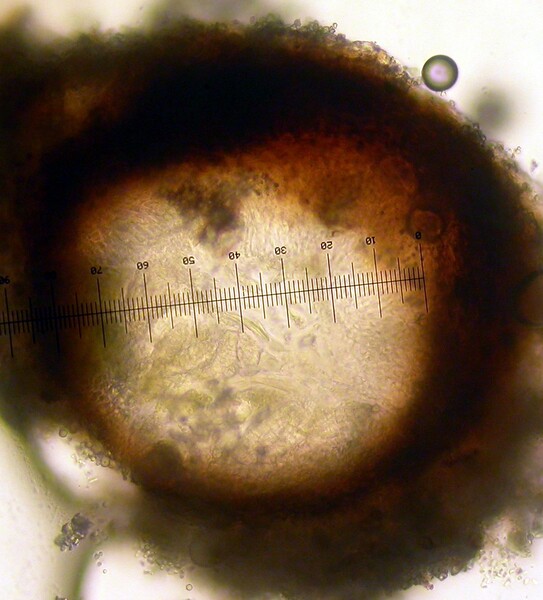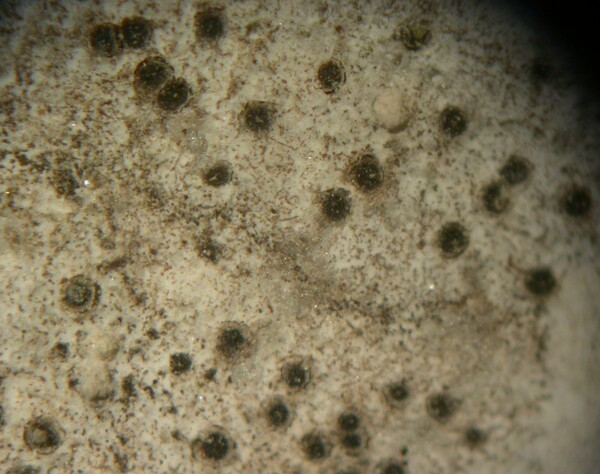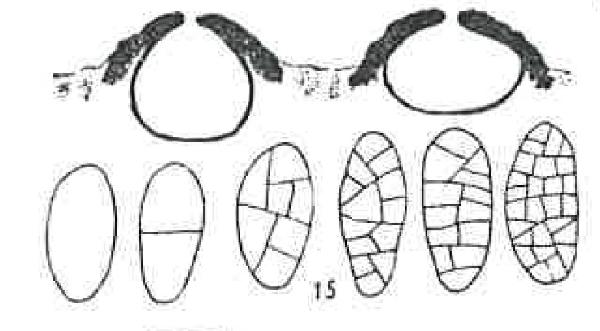Nesothele hymenogonia (Nyl.) Orange
in Orange & Chhetri, Lichenologist, 54: 154, 2022. Basionym: Verrucaria hymenogonia Nyl. - Act. Soc. Linn. Bordeaux, 21: 430, 1856.
Synonyms: Polyblastia hymenogonia (Nyl.) H. Olivier; Polyblastia spurcella (Nyl.) A.L. Sm.; Polyblastia ventosa A. Massal. non Arnold; Polyblastia ventosa var. dispersa A. Massal.; Staurothele arenarum B. de Lesd.; Staurothele hymenogonia (Nyl.) Th. Fr.; Staurothele mediterranea B. de Lesd.; Staurothele ventosa (A. Massal.) P. Syd.
Distribution: N - VG, Ven (Lazzarin 2000b), TAA (Nascimbene 2008b), Piem (Isocrono & al. 2004), VA (Piervittori & Isocrono 1999), Emil (Watson 2014, Fariselli & al. 2020). C - Tosc, Marc (Nimis & Tretiach 1999), Umb (Genovesi & al. 2001, Ravera & al. 2006), Abr (Nimis & Tretiach 1999), Mol (Nimis & Tretiach 1999, Caporale & al. 2008). S - Camp (Aprile & al. 2003b), Pugl (Durini & Medagli 2004), Bas (Nimis & Tretiach 1999, Potenza & al. 2010), Cal (Puntillo 1996), Si (Nimis & al. 1996b, Ottonello & Salone 1994, Grillo & Caniglia 2004, Liistro & Cataldo 2011).
Description: Thallus crustose, endosubstratic, whitish to grey, often inapparent. Perithecia black, often grey-pruinose, 0.3-0.7(-1) μm across, immersed only at the base, often leaving a shallow pit in the rock, forming conical projections, the surface often rough or radially fissured, the ostiolar region flattened or forming a small depression. Involucrellum present, fused with the exciple only in the uppermost part, otherwise diverging from exciple, which is dark throughout; hymenial gel I+ red (I+ blue at very low concentrations of iodine), K/I+ blue; hymenial algae oblong, 3.3-7.5 x 2.5-3 μm, 1.3-2.5 times as long as wide; hamathecium of periphyses and periphysoids, interascal filaments absent. Asci 8-spored, clavate, the wall thickened above, with an ocular chamber, after dehiscence with a delicate extruded endotunica, I-, K/I-. Ascospores muriform, colourless or rarely pale yellowish brown at maturity, ellipsoid, (20-)25-35(-47) x 12.5-22 μm. Pycnidia black, immersed in the thallus. Conidia bacilliform. Photobiont chlorococcoid, present in both thallus and hymenium. Spot tests: K-, C-, KC-, P-, UV-. Chemistry: without lichen substances.Note: on soft calciferous rocks, including calcareous sandstone and dolomite, sometimes also on concrete, with a wide altitudinal range.
Growth form: Crustose
Substrata: rocks
Photobiont: green algae other than Trentepohlia
Reproductive strategy: mainly sexual
Pioneer species
Commonnes-rarity: (info)
Alpine belt: very rare
Subalpine belt: rare
Oromediterranean belt: rare
Montane belt: rare
Submediterranean belt: rather rare
Padanian area: extremely rare
Humid submediterranean belt: rather rare
Humid mediterranean belt: very rare
Dry mediterranean belt: absent
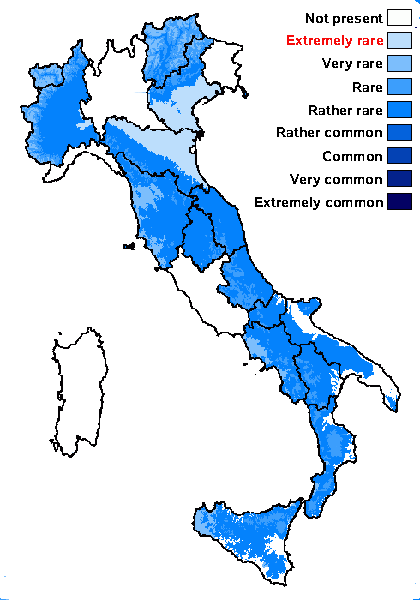
Predictive model
Herbarium samples
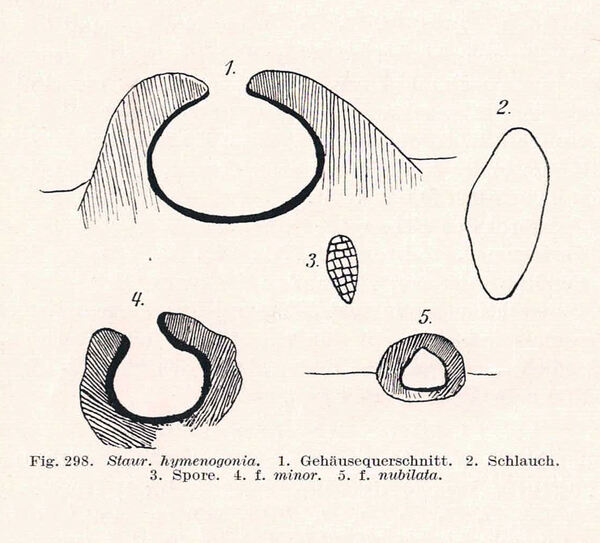
Zschacke, H. (1934) Epigloeaceae, Verrucariaceae und Dermatocarpaceae. In: Dr. L. Rabenhorst‘s Kryptogamen-Flora, Band 9, Abt. 1, Teil 1. Akademische Verlagsgesellschaft, Leipzig, 695 pp. - Public Domain
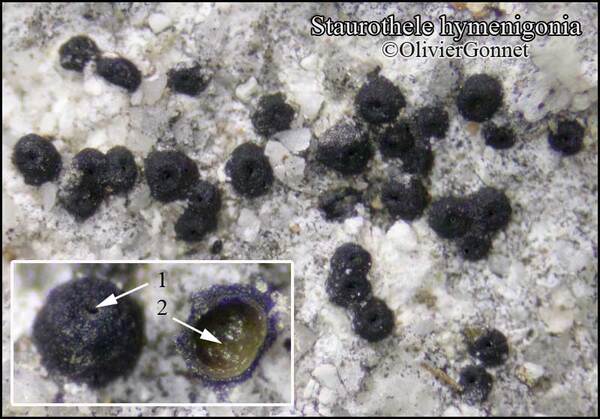
Courtesy Danièle et Olivier Gonnet - Source: https://www.afl-lichenologie.fr/Photos_AFL/Photos_AFL_S/Staurothele_hymenogonia.htm
France
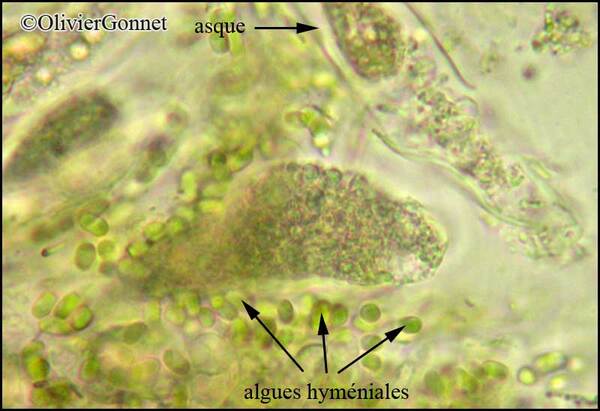
Courtesy Danièle et Olivier Gonnet - Source: https://www.afl-lichenologie.fr/Photos_AFL/Photos_AFL_S/Staurothele_hymenogonia.htm
France
Growth form: Crustose
Substrata: rocks
Photobiont: green algae other than Trentepohlia
Reproductive strategy: mainly sexual
Pioneer species
Commonnes-rarity: (info)
Alpine belt: very rare
Subalpine belt: rare
Oromediterranean belt: rare
Montane belt: rare
Submediterranean belt: rather rare
Padanian area: extremely rare
Humid submediterranean belt: rather rare
Humid mediterranean belt: very rare
Dry mediterranean belt: absent

Predictive model
| Herbarium samples |

Zschacke, H. (1934) Epigloeaceae, Verrucariaceae und Dermatocarpaceae. In: Dr. L. Rabenhorst‘s Kryptogamen-Flora, Band 9, Abt. 1, Teil 1. Akademische Verlagsgesellschaft, Leipzig, 695 pp. - Public Domain

Courtesy Danièle et Olivier Gonnet - Source: https://www.afl-lichenologie.fr/Photos_AFL/Photos_AFL_S/Staurothele_hymenogonia.htm
France

 INDEX FUNGORUM
INDEX FUNGORUM
 GBIF
GBIF
 DOLICHENS
DOLICHENS
